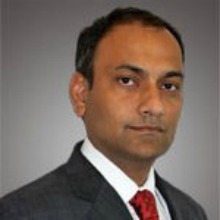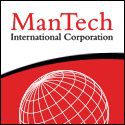
Continuing the popular discussion on the Internet of Things (IoT), WashingtonExec turns to Manoj Gandhi for his view on IoT’s impact within the public sector marketplace. As the Vice President of CRGT’s Enterprise Solutions Group, Gandhi has worked with IoT applications personally and professionally for many years, well before the technology was branded ‘IoT’.
Connecting sensitive devices and applications to the internet is revolutionizing data management while also raising concerns about security and privacy. Gandhi recognizes this clash between innovation and security protection and argues how the public sector can best keep pace with IoT integration in our interview below.
WashingtonExec: In what specific ways can government leverage IoT in the areas of Intel, defense and healthcare to better serve its mission?
Manoj Gandhi: This is a very exciting time to be in application development. The possibilities for what can be done with IoT are endless, and the amount of data we are generating is growing exponentially.
There is a huge potential to reduce costs – every agency has inventories of items and resources to track. Harnessing that data will reveal inefficiencies much more quickly than we could reveal manually using spreadsheets. It could be as simple as eliminating errors in recording where items are located, or more involved, such as monitoring equipment to determine if maintenance is required.
For example, my team developed a business intelligence solution for Camgian Microsystems, which is a sensor manufacturing firm. It was a remote asset monitoring system that read the volume of liquid in storage tanks and communicated the information to Camgian customers through dashboards, reports, and maps. Alarms generated by the system notified customers if leaks or theft were occurring so they could address the problem quickly. Through the mapping system, they were able to determine which storage tanks needed refilling and could plot the best route to complete the task efficiently.
We are already seeing a convergence of mobile, IoT, cloud, and big data analytics in the healthcare market. Mobile technology enables wearable devices to communicate vast amounts of data to the cloud, where it can be stored securely. Organizing and analyzing that data will improve preventive medicine initiatives, which will enhance the citizen’s experience and reduce the cost of healthcare.
Health and fitness wearables are big business right now. I think that within the next few years, some level of built-in intelligence and connectivity will be regarded as standard for all network-capable devices, and this will rapidly filter down to mainstream products and services. We are already seeing these initiatives in the government – the Department of Defense and Department of Veterans Affairs have efforts underway. As soon as there are comprehensive policies in place concerning security and privacy, we will see a lot more procurement in this area.
WashingtonExec: The question that all leaders in federal IT are asking is: how can contractors best help the government leverage the Internet of Things? In what sector are you seeing the most growth as of today?
Manoj Gandhi: I think healthcare will be one of the easy targets for the Internet of Things to reduce the cost.
WashingtonExec: What do you think the government should be doing now to prepare for bringing IoT devices onto sensitive networks?
Manoj Gandhi: I think security and privacy concerns are certainly at the forefront with the increase of the devices coming online we will be seeing a lot more news about hacking and information theft. If we don’t rethink security that will happen more frequently. We need to proactively maintain the security and embed it into the system designs rather than place security on top of the completed system. The government needs to develop more guidelines or legislation directed towards companies that outlines expected levels of security, and requirements in the instance of a notification breach. Another issue that I see is the interoperability. Integrating thousands of devices means that differing operating systems have to be compatible. One of the concerns is that if there are no standards, there will be devices that cannot talk to each other. The government definitely needs to help in defining these standards.
WashingtonExec: Do you see IoT changing the way acquisitions and procurements are issued or executed? How so?
Manoj Gandhi: Accelerating the adoption of IoT into the federal government would be an incredible cost and time saver for procurement officials. As I said before, automating the tracking of inventory levels is just the beginning. The bigger picture is situational awareness – this is made possible by the interconnection of devices prior to involving a person. For example, using sensors in building maintenance can bring together diagnostic information – what equipment needs maintenance, the spare parts and tools needed, and the appropriate service technicians to dispatch – before automatically notifying the service team. This detailed view of the situation at the outset would reduce maintenance costs, and in the case of the procurement official, gives insight into contractor performance.
To make the best use of IoT, government procurement teams will need to invest in big data analysis. The enormous growth of IoT, cloud, and mobile technologies has the potential to overwhelm procurement teams with information. Actionable information is the goal. Determining what to do with “potential data” should be addressed before investing in data-collection from IoT devices.
WashingtonExec: So far you’ve talked a little bit about privacy issues with the application of IoT devices. What is your take on making sure that we keep sensitive data safe and secure, while also keeping pace with technological innovations?
Manoj Gandhi: Each goal that is being addressed requires a different kind of information. It makes it very difficult to set firm guidelines or the firm standards about the data collection and privacy for every connected item. There does have to be defined security policies that prevent the reselling of your data.
For example, my team worked on an enterprise energy management system for a federal agency, tracking the energy consumption in real time in their facilities. We worked closely with the customer to ensure that we only collected relevant personal information about the field users of the system, and that the information was protected and only shared with a tightly regulated group.
WashingtonExec: The internet became available for public use in the 1990s, PCs were first widely sold in the early 2000s, would you classify the Internet of Things as the next disruptive technology or do you consider it a tool building upon current mobile technology? Why?
Manoj Gandhi: I think I see IoT as a progression of mobility. It is certainly interruptive, but in the best way. We will need to rethink the way we do things because IoT has changed the landscape of what is possible and what is not possible. It has become much cheaper to procure the processing power, cloud computing has evolved, networks are much more reliable. I think this will become mainstream as time progresses.
WashingtonExec: What is your favorite Internet of Things technology?
Manoj Gandhi: I personally have had a Nest installed in my house for more than a year. It’s amazing actually because I was on vacation and realized that I forgot to switch on the vacation mode. It was cool to be able to turn on my iPhone, log into the Nest application, and switch on the vacation mode from there.


